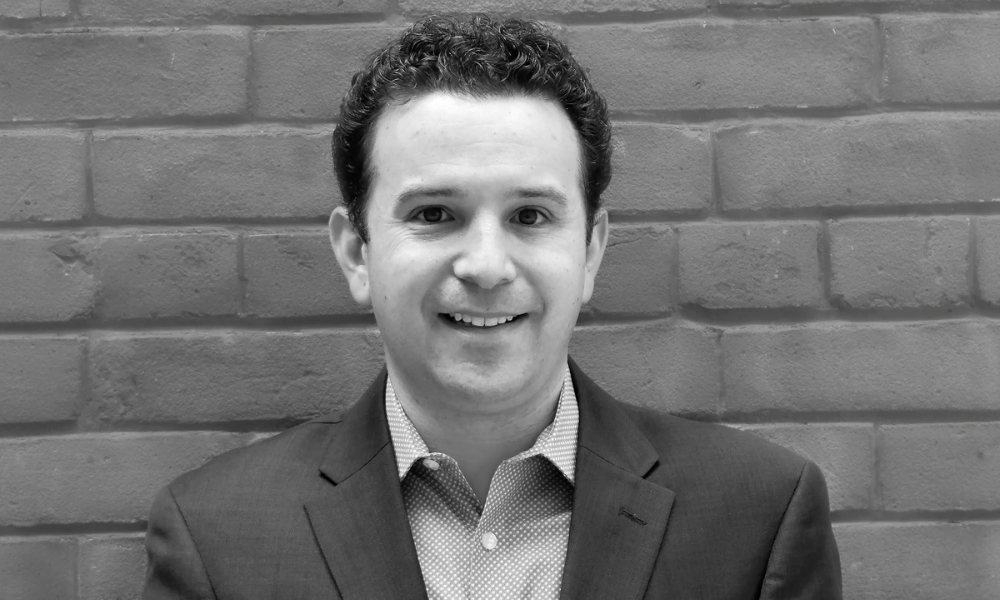With #MeToo well established and sexual harassment claims on the rise, why are executives still behaving badly? Sarah Dobson takes a look at what HR be should be doing to combat the troubling trend

The hits just keep on coming. And not in a good way. Recently, several high-profile corporate leaders have toppled from their place up high because of “indiscretions.”
Take Mark Wiseman, for example. Previously the CEO of the Canada Pension Plan Investment Board for four years, he went on to become managing director at BlackRock in New York in 2016. But that ended recently when the company announced that Wiseman was leaving after violating the company’s “relationship at work” policy.
Similarly, McDonald’s dismissed its four-and-a-half-year president and CEO, Steve Easterbrook, in November after he violated company policy by engaging in a consensual relationship with an employee. The fast food giant forbids managers from having romantic relationships with direct or indirect subordinates.
And in 2020, David Drummond, chief legal officer at Google, announced he was resigning more than a year-and-a-half after allegations he had a serious affair with a subordinate. The company is said to have a policy “discouraging” or “outright banning” relationships with direct reports. Maybe we shouldn’t be too surprised. Last year, an annual report by PwC Strategy& found that for the first time in an annual survey, more CEOs were ousted due to ethical lapses than company financial performance or struggles with a company’s board.
But with the #MeToo movement more than two years old now and many employers ramping up efforts to combat such behaviour — while employment lawyers see a jump in sexual harassment claims — why do executives continue to behave badly? And, more importantly, what should HR be doing to combat the troubling trend?
The damaging effect of human nature
“I think it keeps happening because they don’t think they’re going to get caught. I’m not sure if it’s any more complex than that. There’s very little oversight from the board for the C-suite. I mean, they’re focused on return on shareholder equity... It’s not that they’re not interested or they don’t care about this, I just think it doesn’t ever hit their radar unless something happens,” says Janet Candido, principal of Candido Consulting Group in Toronto.
A lot of executives have that Napoleonic syndrome and think they’re beyond reproach, says Martin Sheard, employment lawyer and owner of Tevlin Gleadle Curtis in Vancouver.
“Didn’t [French philosopher Michel] Foucault say that sexual relationships are inherently about power? And I think it’s just a kind of kind of a manifestation of that Foucaultian dynamic.”
People spend more time with people at work than almost anyone else in their life, plus there are social functions and travel, so there’s “sheer access and opportunity,” says Karen Wright, managing director of Parachute Executive Coaching in Toronto.
“There’s so many ways people are in more contact just by volume of time with people at work. So, I think that that starts the problem,” she says.
“The people that you work with are interested in the same things, are facing the same challenges, are deep in the same subject matter. And that I think creates a connectedness that… can be misinterpreted.... It’s quite easy to get drawn into a situation where there’s a connectedness.”
But this kind of behaviour is worse when it’s done by executives, says Wright.
“They are in that position in large part because of some belief about their judgment. And, for me, a senior executive who will make a choice to engage in a relationship that is either not allowed or inappropriate or in any way is a function of a power dynamic… is a lapse in judgment,” she says.
“If your company has a policy, then the rules are clear. And to think that you can be an exception or can get away with something when the policy is there, that is almost never true.”
Plus, it should not be assumed that consensual and inappropriate are separate, says Wright.
“Specifically, in cases where there’s a hierarchical difference, where there’s the implication of a power dynamic, but most specifically… even if it’s consensual, if there’s a company policy, it’s inappropriate,” she says. “If it is something that will have an effect on decision-making or preferential treatment and that sort of thing… then it should be disclosed.”
There are a few challenges with workplace relationships, even if they are consensual, says Kent Williams, assistant professor of the Rowe School of Business at Dalhousie University in Halifax.
“It can make co-workers uncomfortable and that can lead to trust and equity issues and also the whole idea that there can be a perceived or real preferential treatment. That brings up challenges around equity. And… they can affect families and marriages at home, which can be disruptive to the organization as well,” he says
“If you’re building that value-based organization, the framework is that senior leaders have to model the way and they’re the ones that really have to live true to the values of the organization… That’s the social contract for the organization, the norms and how they show up at work.”
Organizations and boards are taking a tougher stance on the issue today because they realize that this can have a major effect on the overall organization, says Williams.
“Now, we hear a lot more with the #MeToo movement. Let’s face it, we’ve lived in a patriarchal-dominated society and it’s still that way [but] it is changing and that is a good thing. And so these issues are starting to come more into the light… there’s less tolerance for it.”
Combatting the issue
Having written policies in place around what should be disclosed or discouraged can often save employers a lot of headache, says Sheard, but few employers tackle workplace romance that way.
“I can’t say I’ve seen a greater interest on the policy side for employers, which is kind of funny because I think I’ve seen a renewed or heightened interest from the survivors/complainants… Maybe the employers’ reaction just hasn’t caught up to that,” he says.
“I almost always say to my employerside clients, ‘For just a little bit more in fees, I could draft manuals that would eliminate 99 per cent of the problems you could ever face.’ And my success rate on that is probably below five per cent. Nobody ever takes me up on it,” says Sheard.
“The problem is those savings never show up in the balance sheet. And I think that’s why a lot of people are opposed to them.”
While a policy around workplace relationships is a good idea, it’s not straightforward, says Wright.
“It’s really tricky; to put an ‘absolutely not/no way/full stop’ on relationships at work is unrealistic. I think it’s impractical and probably not necessary. I mean, peer-level relationships happen all the time. That’s probably OK… So it sounds like crafting a policy that is pragmatic and useful, and not arbitrarily doing a broad stroke and everything, I think that’s really hard.”
Improved recruitment when it comes to executives is another option to combat the issue, she says.
“It is complicated and hard to get right even on a good day. And that’s where things like psychological assessments and the experiences, judgment and intuition of a really good advisor [or] executive recruiter [help],” says Wright.
“It’s possible to get a sense of how someone makes decisions, how they exercise judgment, how they respond under pressure, what degree their emotions play in how they think through situations.”
It’s important to understand people’s merits and see if they do fit into the values of the organization, says Williams, “throughout the process, like when you’re interviewing candidates for the organization so they understand what your values are as an organization and also [for the employer] to understand what their values are.”
Another way to constrain behaviours such as this from escalating is to have some kind of whistleblower policy, says Candido.
“There’s a lot of downright fear. There’s a lot of ‘I don’t want to believe anything is actually happening’ that goes on… ‘I didn’t really want to get involved. I wasn’t sure what was going to happen. I don’t want to be responsible for somebody losing their job.’”
If HR has a good relationship with employees outside of this, they’re more likely to be trusted, she says.
“That’s the other issue: Does an employee report to HR this has happened and then HR actually do something about it? Do they have the credibility internally to make anything happen? So, it’s both do they trust HR [and] do they think HR has the credibility to do anything?”
But you have to be very careful around a whistleblower program because you don’t want it to be one of these big brother situations where people are always looking over their back, says Williams.
“The best way to do it is really building out culture and in living your culture around respect, equality, integrity.”
There also needs to be more training around workplace relationships that is taken seriously, says Candido.
“If you really want to affect any kind of cultural change, that conversation has to be ongoing, and it has to be informal as well as formal. Things like employee focus groups where you talk about culture and you talk about things like… how we behave, how we speak to each other, how we deal with each other. I think that has more impact than just issuing a memo or a policy or finding out that something’s happened and ‘Here’s what we did about it.’”
Greater diversity would also make a lot of sense, she says.
“If they really want to make changes to the culture, they need to start by putting more women in the C-suite so that it’s not this… old boys’ club,” says Candido.
“That will raise awareness not only of the contribution that women can make but of the impact of certain actions.”
When the crisis hits, transparency is key, says Williams.
“A lot of times, senior leader leadership doesn’t share… but that can create a lot of uncertainty for people. And we know that uncertainty is not a good thing; it can create a lot of fear within the organization. So, it is the job of senior leadership to be really transparent in uncertain times and to share information.”
Is termination necessary?
In most high-profile cases, the offending executives are removed from their post or step down. But is a full departure always necessary?
“I’m not in favour of that unless it’s really severe because of the unintended consequences that come out of that. If you’re rushing every male [out the door] — it’s usually a male that is accused or even found to have been guilty of some transgression… I think it will increase the level of fear people have around reporting it. And you’re not doing anything to educate that executive on what they’ve done wrong,” says Candido.
“Unless it’s really egregious, I’m not generally in favor of a termination because I don’t think it really accomplishes anything,” she says. “I would like to see more things like mentoring by other male colleagues on why that was wrong and what you should be doing instead… Before there’s a transgression, be a little more proactive about it.”
But in the majority of instances, sexual impropriety in the workplace is very serious and should almost always result in dismissal — even for one instance, says Sheard.
“There’s always nuance and there’s always a counterexample in the law. But if you want a really quick and dirty summary, I would say if there’s physical, unwanted contact involved, you’ve got a shot at just cause even on the first instance; and if there’s nothing physical, it’s almost always going to fail on the first instance. But then, if you’re warned and you do it again, even the verbal ones can lead to [a] just cause finding,” he says.
“If you don’t fire the perpetrator, then the survivor might have a very strong, constructive dismissal case against you. And so now you’re facing a legitimate lawsuit from an innocent party who’s done nothing wrong to you versus a weaker lawsuit if not a hopeless lawsuit from someone who’s done something completely wrong.”
Employers also have to factor into the equation workplace safety, the retention of innocent workers and workplace morale, says Sheard.
“So if an employer comes to me with the question: ‘What should we do?’ I am-hard pressed to think of a situation where I wouldn’t say, ‘You should fire the perpetrator.’”
The response to the misbehaviour really depends on the context. For larger organizations, it can be about protecting shareholder value, says Williams. “This is why you see a lot of this ‘no tolerance’ and harshness is because they do not want any negative impacts.”
A smaller employer could take other measures if that person’s been a valuable asset to the organization and the value of the organization will not be affected, he says.
“But I can understand from these largescale [companies like] McDonald’s, BlackRock why they took the swift action they did, and I believe it comes down to protecting shareholder value.”
The response from HR and the board really depends on the company and the situation, says Wright. If it involves “unencumbered” adults who are not in the C-suite and have ventured into a relationship that they want to pursue over time, and it’s a big enough company, they can be separated so they’re not impacting each other’s decisions.
“You want to make sure it is clear that yes, there is a relationship and it in no way impacts their decisions or their interactions with others or how they assign tasks or projects,” she says. “If it’s a big company, I think it’s entirely possible; it’s much trickier in a smaller one.”
PUBLIC OPINION IN 2017
| Fired | Reprimand | Nothing | Lose Bonus | Prison |
| 41 % | 28% | 13% | 11% | 7% |
CEO TURNOVER
14.7%
Overall turnover rate for North American CEOs in 2018
3.4%
M&A turnover rate (out of 14.7%)
2.9%
Forced turnover rate (out of 14.7%)
8.3%
Planned turnover rate (out of 14.7%)
Source: PwC Strategy
HARASSMENT AT WORK
19%
Number of women experiencing harassment at work in 2016
13%
Number of men experiencing harassment at work in 2016
47%
Number of men who have been harassed by a supervisor or manager who had a “weak sense of belonging” to their current organization.
34%
Number of women who have been harassed by a supervisor or manager who had a “weak sense of belonging” to their current organization.
39%
Number of men harassed by a supervisor or manager
32%
Number of women harassed by a supervisor or manager
Source: Statistics Canada




